
| Main Page |
TSE 2012 |
Eclipse
Page |
After nearly a week of intermittent rain in Papua New Guinea and
two days of sailing south with barf bags along the handrails of
the ship, we arrived back in Cairns, Australia. The tour team
included eclipse meteorologist Jay Anderson
so our group had an advantage as far as weather planning.
Based on Jay's forecasts the prospects were good for clear weather
off the coast - provided we were in the right spot.
His plan was to maneuver the ship to cross the center line near
Green Island while steaming north at minimum speed.

This was a nearly sunrise eclipse (C1 was about 10 minutes after
sunrise). We woke about 4 AM to scattered clouds and a great
view of the southern Milky Way. The ship was still heading
south at this point.

This shows the shadow of the moon as it crossed our site.
The shadow approaches from over my left shoulder. As it crosses
the sun the moon enters the total eclipse. Watch the lower
right part of the horizon. You will be able to see the
shadow as it fills the sky. Eventually it blocks the sun all
the way to the horizon.
After about 1 minute into the eclipse I had to shift the
camera. You can now see the left side of the shadow.
As C3 approaches the sky to the left lightens. As the shadow
crosses the sun the total eclipse ends.
The island in the picture toward the end of the eclipse is Green
Island.
While one camera was taking the movie my 20Da was taking pictures
using my 300mm Zoom lens (35mm equivalent of 480mm). This is
not as zoomed in as the telescope setup I used in Libya and on Easter Island. For this
eclipse I chose to hand hold the camera to avoid past problems
with photographing on boats. It was possible to hand hold
the camera with OK results (just OK).
This was not my best eclipse work. Unfortunately the camera
was set to ISO 1600, which on a 20Da means very noisy
pictures. Still I managed to capture what was happening even
if I did not end up with publication quality photos.
If you are planning to photograph an eclipse then you have to do
three activities at the same time; look at the sun, change the
exposure, and take pictures. Some dry runs and my experience in
2010 told me that if I ran fully manually I could pick two of the
three choices. I decided to use my programmable shutter to
automatically take the pictures and allow me as much time as
possible to look at the eclipse. Thus I needed (in theory)
to only dial the shutter speed and while enjoying the view.
That mostly worked, but I am considering full computer control for
the 2013 eclipse (like I did in 2006). I still spent too
many brain cells on the camera and not enough on watching. The
next eclipse will be about 1 minute so all of my actions will need
to be well considered and practiced.
The corona pictures are a mix of early and late images.
Since the brightness difference between the prominences and outer
corona are so great, any single shot will only capture a portion
of the complete experience. Other portions of the picture
will be underexposed or overexposed (some times grossly so).
I have ordered the pictures from brightest to dimmest. Try
to just look at the newly added detail and ignore the over exposed
portions.
After some fumbling I started taking pictures about 10 seconds
after C2 (when totality begins).
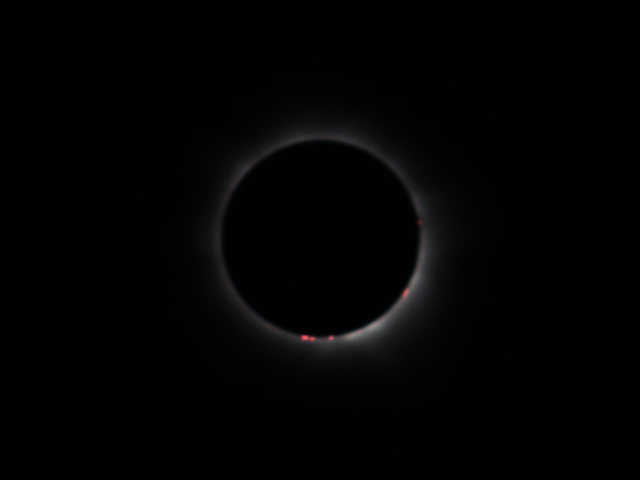

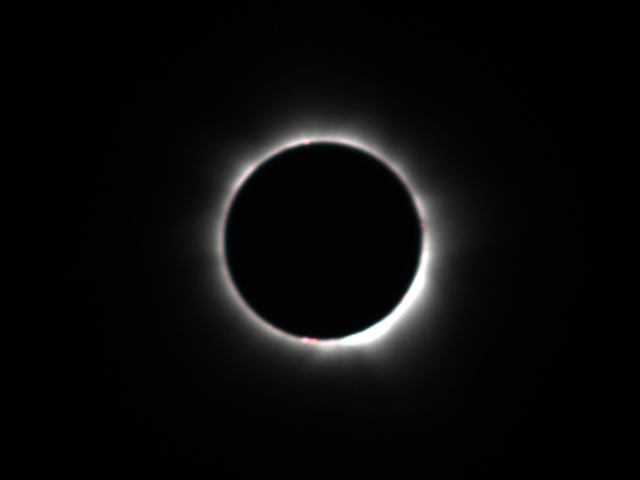
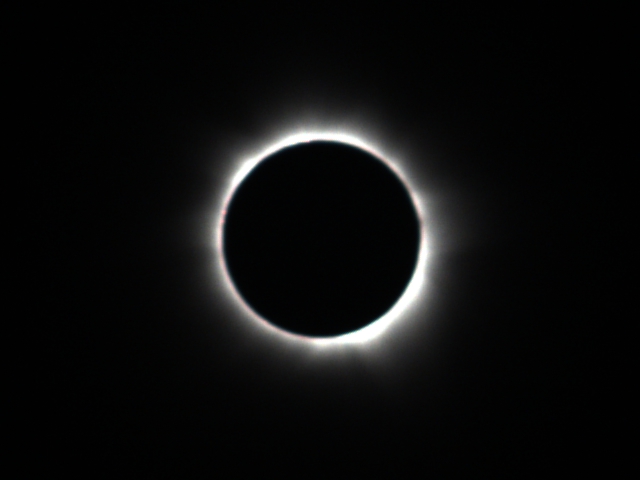
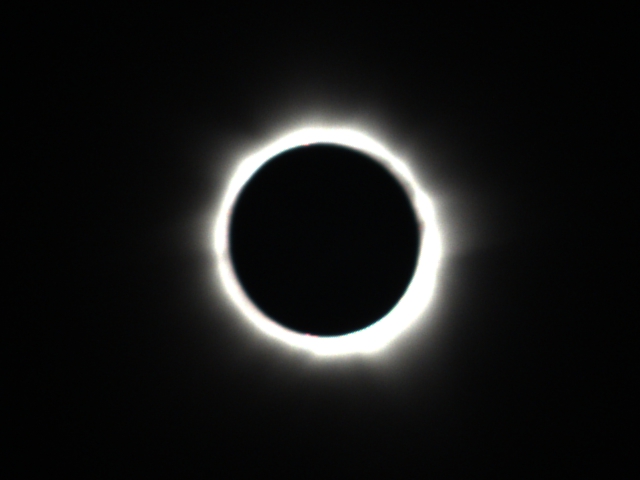
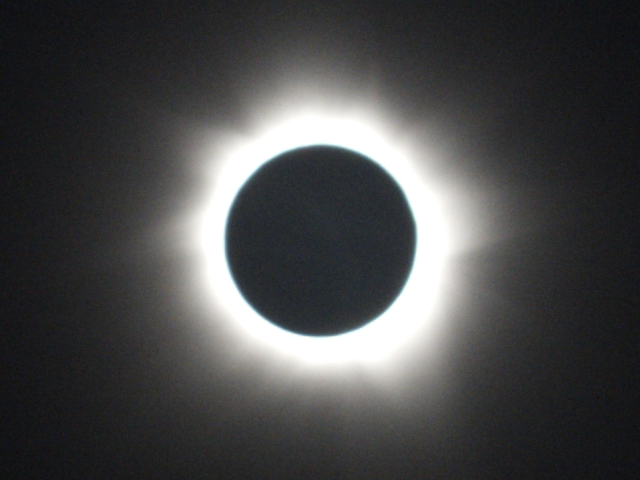
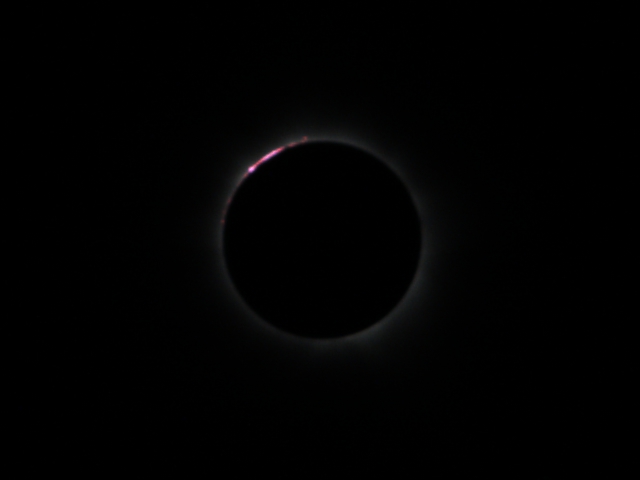
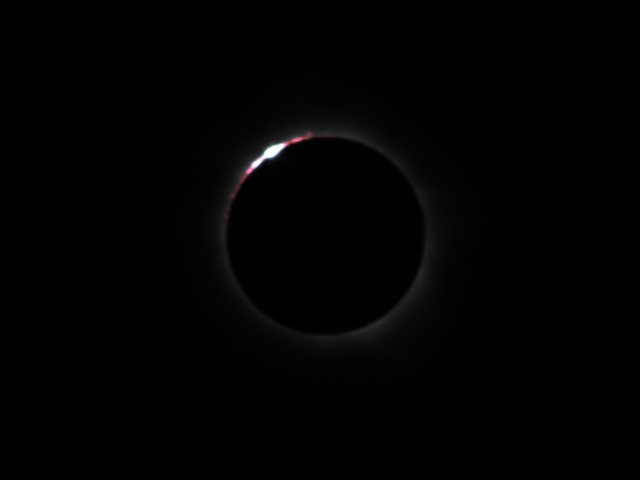
Copyright 2012 Robert J. Hawley, Some Rights Reserved
![]()
All photos and text concerning the Total Solar Eclipse 2012 were
taken by Robert J.
Hawley and are licensed under a Creative
Commons
Attribution-Noncommercial-Share Alike 3.0 United States License.
This permits the non commercial use of the material on this site,
either in whole or in part, in other works provided that I am
credited for the work.
I have also granted a commercial license for some of the images.